Museum's past inspires showcase of the future
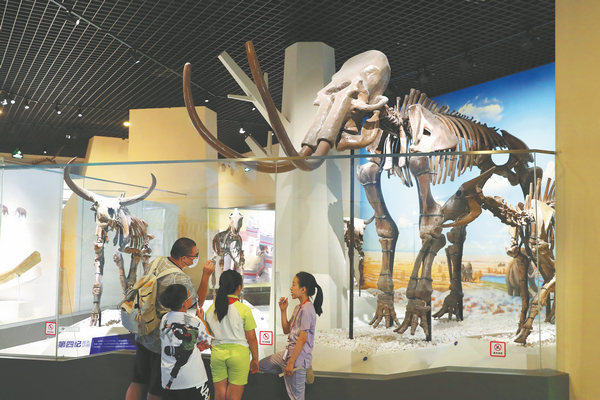
A teacher explains to pupils the extinction of the woolly mammoth at the National Natural History Museum of China in Beijing. WANG ZHUANGFEI/CHINA DAILY
Institution focusing on natural history continues to evolve into a world-class site, Wang Qian reports.
The recently inaugurated National Natural History Museum of China in Beijing has inspired and motivated generations of young visitors over the past seven decades. Formerly known as the Beijing Museum of Natural History, the institution has developed from humble beginnings.
To mark its June 5 inauguration, the exhibition, Curator's Choice Collections — Preserving the Past for the Future, which opened concurrently at the museum, displays its history over the past 72 years.
The monthlong exhibition is divided into four sections: a decade in preparation (1951-61), the development of the Beijing Museum of Natural History (1962-2007), the museum's expansion period (2008-22) and a new start as the National Natural History Museum of China.
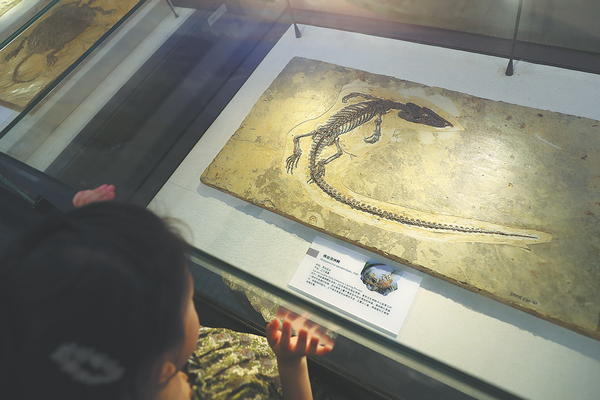
A replica of a dinosaur's skeleton fascinates visitors. WANG ZHUANGFEI/CHINA DAILY
An introduction to the exhibition says: "These exhibits remind us of the museum's forerunners and motivate us to carry on their course. In the future, we will strive to create an even more glorious chapter for the museum."
After the founding of the People's Republic of China in 1949, how to build a State-level natural history museum was a new field to authorities and scholars. With paleontologist Pei Wenzhong (1904-82) as its office director, a preparatory committee to build the museum was set up in Beijing by the culture ministry and the Chinese Academy of Sciences in 1951.
Shi Mozhuang, a former researcher with the museum, recalls that back in the 1950s, the natural history museums in Western developed countries then had already a history of more than 100 years, and their rich collections, professional teams, methods of management and proper exhibition halls made them a real platform of research, education and public outreach.
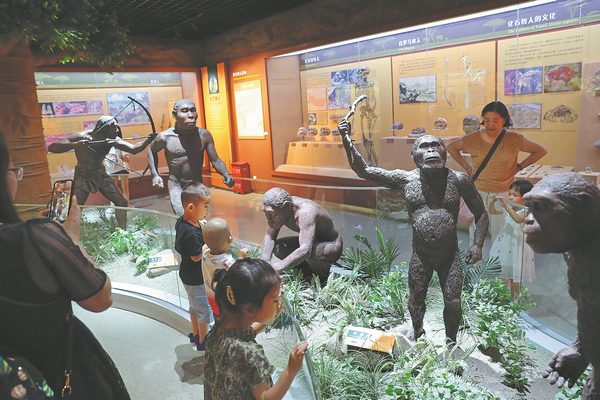
The museum gives a glimpse into the rich diversity of mammals, from polar bears to cats. WANG ZHUANGFEI/CHINA DAILY
"Museum researchers, like me, didn't want to lag behind in building our museum and through discussion, we resolved to collect and expand the museum's collection through holding exhibitions," says the retiree.
In 1954, the preparatory committee held an exhibition on the country's mineral resources at the Palace Museum's Hall of Literary Brilliance (Wenhua Dian) and later several exhibitions were organized by the committee. These events made the museum one of the major cultural venues getting widespread public attention.
In 1956, "the central natural history museum" started construction at Tianqiao Nandajie (Tianqiao South Street). It was designed with three stories in the main building and two stories in its two wings.
In January 1959, it opened its doors to the public, becoming the first large-scale natural history museum built by the country on its own with a large amount of specimens representing a vivid evolutionary history.
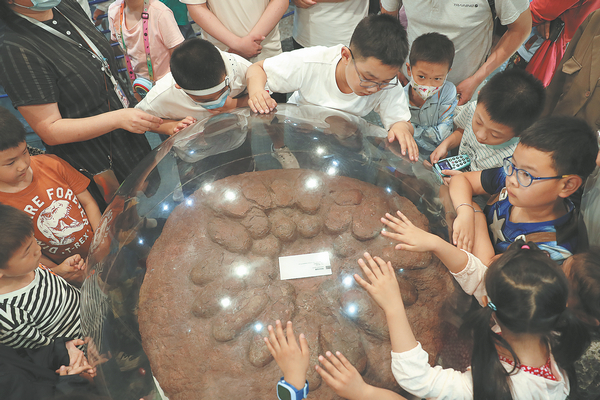
Children are amazed by a nest of fossilized dinosaur eggs. WANG ZHUANGFEI/CHINA DAILY
In 1962, it was named the Beijing Museum of Natural History with world-renowned paleontologist Yang Zhongjian (1897-1979) as its first director. Yang was quoted by the museum as saying that he "wanted to do some real work" during his term.
According to magazine Man and the Biosphere, before the museum opened, its collection size was considered too small. To guarantee a decent paleontology collection was on display at the opening, Yang asked the Institute of Vertebrate Paleontology and Paleoanthropology for help in providing personnel and fossils, as he was then also director of the institute.
Not satisfied with just an exhibition role, he emphasized that the museum should have its own expert team for scientific research.
Under his guidance, the museum staff carried out multiple tasks, such as acquiring, conserving, researching and exhibiting essential sources of biological data.
Facilities for specimen storage were built, while research teams were organized.
Yang's two successors as museum directors were academicians of the Chinese Academy of Sciences, who had both been committed to promoting the museum's scientific research.
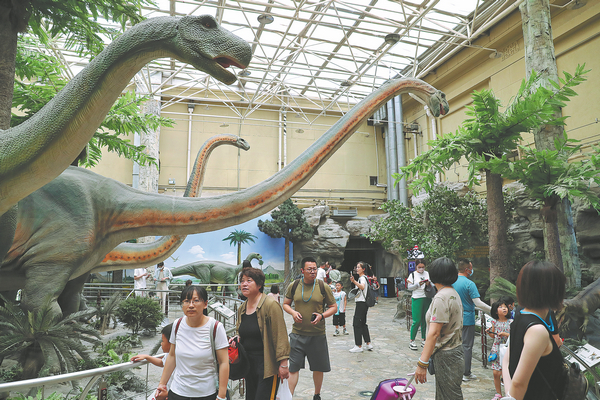
Dozens of life-size dinosaurs loom over visitors to the Dinosaur Park. WANG ZHUANGFEI/CHINA DAILY
Thanks to these efforts, in the past decades, researchers of the museum have published hundreds of articles in journals both at home and abroad.
According to Beijing Daily, the museum's exhibition area in 1962 covered more than 4,000 square meters, exhibiting about 5,000 specimens.
After decades of development, the museum expanded to about 23,000 square meters, housing a collection of more than 372,000 scientific specimens and cultural relics and receiving 1.8 million visits every year, according to the museum's statistics.
Among its star collections are a world-famous skull of Stegodon zdanskyi, also called the Yellow River elephant, and a 26-meter-long Mamenchisaurus jingyanensis, one of the longest dinosaur fossils ever found in China.
It is also home to one of the best collections of Jehol Biota fossils accessible to visitors. The Jehol Biota in eastern Asia contains a plethora of evidence regarding terrestrial ecosystems during the Early Cretaceous period (about 145 million years ago).
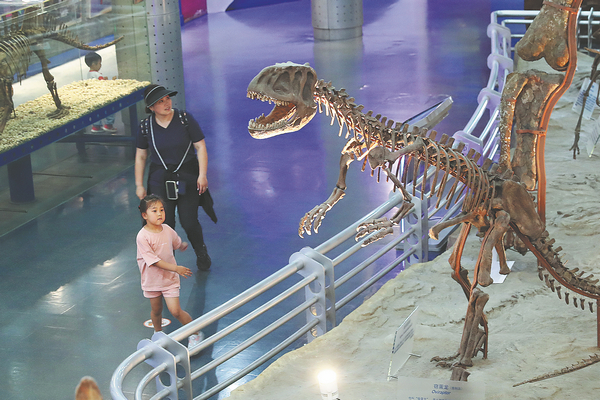
A girl is engrossed by a fossil discovered in Liaoning province in 1940. WANG ZHUANGFEI/CHINA DAILY
Every year, the museum launches exhibitions with different themes and many science education activities, such as Night at the Museum and Little Docents.
In 1980, the museum's former directors — Pei, Xu Ren, Zheng Zuoxin and Zhou Mingzhen — wrote an article in the journal China Nature, calling for establishing a State-level natural history museum. Since then, many experts have echoed the call.
In 2006, Li Chengsen, the then-director of the Beijing Museum of Natural History, suggested establishing a national natural history museum. The suggestion got support from 26 academicians, who wrote a letter to the State Council, China's cabinet.
During the two sessions — the National People's Congress and the National Committee of the Chinese People's Political Consultative Conference — in 2019, Zhao Jindong, academician of the Chinese Academy of Sciences, sent a proposal to build a State-level natural history museum, and later that year, the National Cultural Heritage Administration responded that the administration supported the establishment of the national natural history museum with the project under research.
In January, the Beijing Museum of Natural History was officially permitted to be named the National Natural History Museum of China. For Meng Qingjin, senior researcher and director of the National Natural History Museum of China, the establishment of the museum marks a new page in the country's development of the sector.
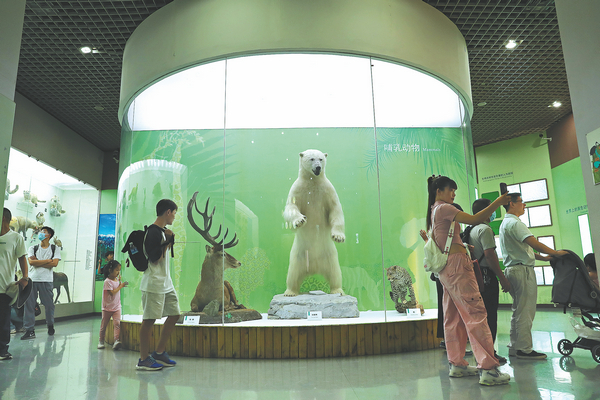
At The Origin of Human Beings exhibition, the evolution of humans is explained. WANG ZHUANGFEI/CHINA DAILY
In her video message to the new museum, Emma Nardi, president of the International Council of Museums, says: "This is an important moment for the China museum community and it will be a significant event for the international museum family that brings us more potential in professional cooperation in natural history museums."
At the plaque ceremony this month, a new site of the museum was also unveiled in an official video.
The new location, south on the Central Axis of Beijing, covers an area of 57,700 square meters. The institution will expand its collection, play an increasingly important role in scientific research, curate more attractive and informative exhibitions, develop diversified learning programs and deepen international communication, according to Meng.
Contact the writer at wangqian@chinadaily.com.cn

